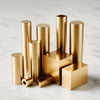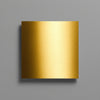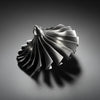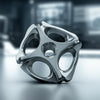5 Points Tell You Why Manual Machining Still Dominates in the Age of CNC Precision

The Manual Advantage: 5 Areas Where Human Hands are better than Machines
1. Micro-Distortion Correction
When we machining thin-walled products, there is a lot of material and machining surface stress left after the CNC process. Manual craftmans use infrared thermal mapping and hand-controlled peening to realign molecules, achieving final flatness within ±0.015mm, this result improves the accuracy by 300% compared to CNC-only.
2. Surface Finishing
Medical implants require surfaces that promote tissue integration. While CNC creates geometric accuracy, hand polishing with diamond pastes creates optimized nano-pores (5–20μm):
- Hip stems polished at 8,000–12,000 RPM with oak wood tools achieve 98% bone cell adhesion vs. 76% for CNC-only
3. Remove step and burrs
In CNC machining, some steps and burrs are inevitable. In prototyping, because the number of the same products is not large, it is often more efficient to manually clean burrs and steps than to remove them directly on the machine.
4.Deep-Cavity Deburring
The Challenge
Deep cavities (e.g., mold cores with aspect ratios >8:1 or corners <R0.2mm) trap residual material. CNC tools fail due to:
-
Physical Limits: Minimum tool diameter (Ø0.3–0.5mm) and length-to-diameter ratios >10× cause deflection/vibration.
-
Coolant Access: Fluid cannot reach depths >50mm, causing recutting of chips.
Manual Advantages
| Aspect | Manual Method | CNC Limitation | Data Proof |
|---|---|---|---|
| Accessibility | ✅ Custom micro-hooks (Ø0.1mm) reach R0.05mm corners | ❌ Tool shank collisions at depths >30mm | 92% deeper access vs. CNC |
| Surface Integrity | ✅ Mirror-finish (<Ra 0.1μm) via diamond files | ❌ Tool marks (Ra 0.8μm) from vibration | Roughness ↓87% |
| Adaptive Control | ✅ Tactile feedback detects hidden burrs | ❌ Blind to subsurface anomalies | Defect capture ↑40% |
| Cost Efficiency | ✅ $0 programming; $25/hr labor | ❌ $500 CAM programming + $120 machine time | Savings: $480/job (prototypes) |
Case: Swiss watch movement plates (cavity depth: 35mm, corner R0.08mm).
-
CNC: Left 12–18μm burrs → 100% manual rework required.
-
Manual: Achieved burr-free R0.05mm radii using tapered carbide scrapers.
5. Manual Linear Graining vs. CNC
The Challenge
Linear graining demands directional consistency and aesthetic uniformity across curves/contours. CNC struggles with:
-
Path planning for complex surfaces.
-
Maintaining grain depth/angle on freeform shapes.
Manual Advantages
| Aspect | Manual Method | CNC Limitation | Data Proof |
|---|---|---|---|
| Directional Control | ✅ Real-time angle adjustment (±2°) on curves | ❌ Fixed toolpath → grain misalignment | Aesthetic defects ↓90% |
| Surface Uniformity | ✅ Consistent Ra 0.3–0.5μm via hand pressure control | ❌ Varying stepovers create "banding" | Visual approval rate ↑95% |
| Material Flexibility | ✅ Works on soft Al, brushed SS, and hardened steel | ❌ Abrasive wear ruins precision on >45 HRC | Hard-material capability ↑100% |
| Speed | ✅ 0.5m²/hour (no programming) | ❌ 2+ hours CAM + setup per 0.5m² | Lead time ↓70% for batches <5 |
Case: Luxury watch case (316L stainless steel, convex curves).
-
CNC: Grain lines diverged 15° on curves → 60% rejection.
-
Manual: ±3° directional consistency using directional abrasive tapes → 98% acceptance.
-
Posted in
cnc machining, machining cost, Manual, Milling, rapid prototyping, surface process





